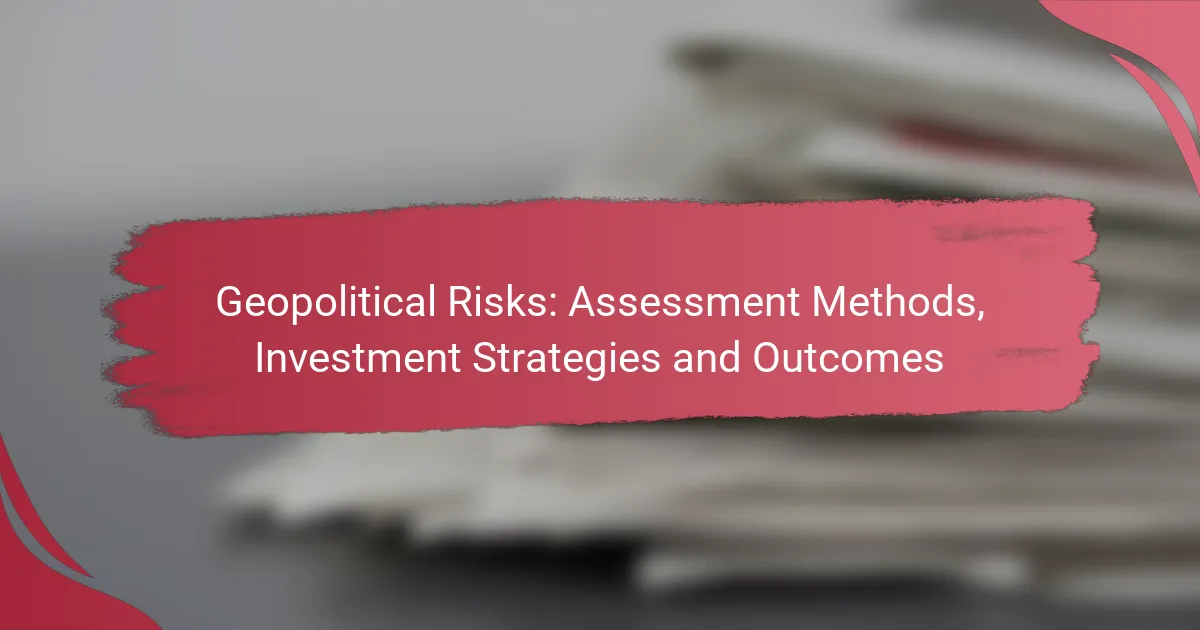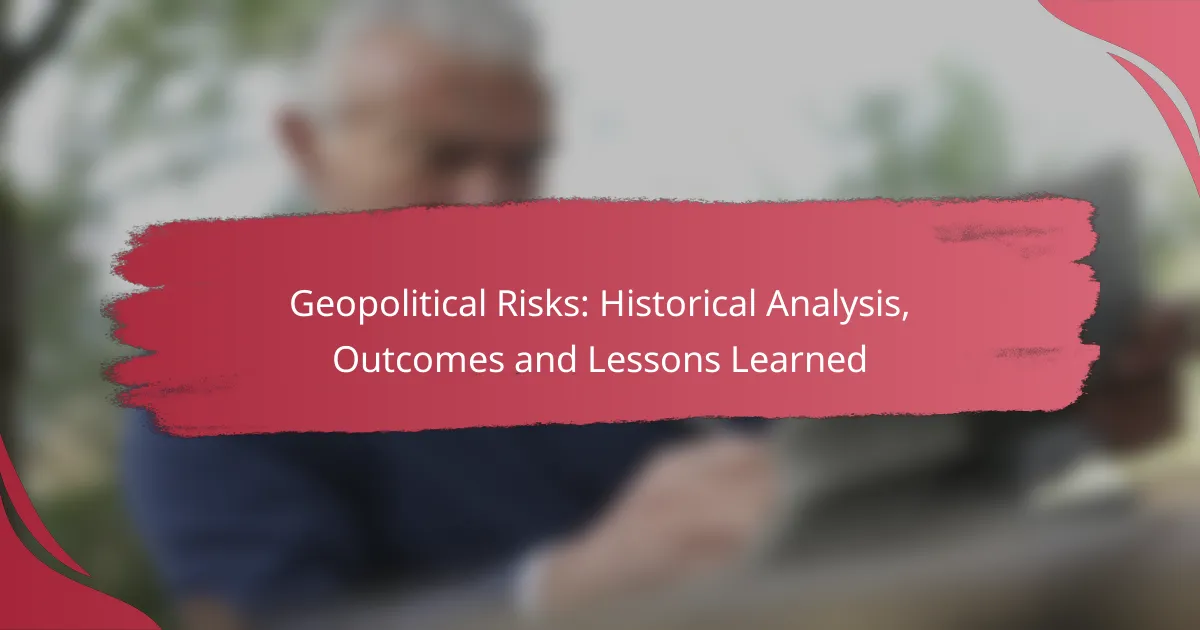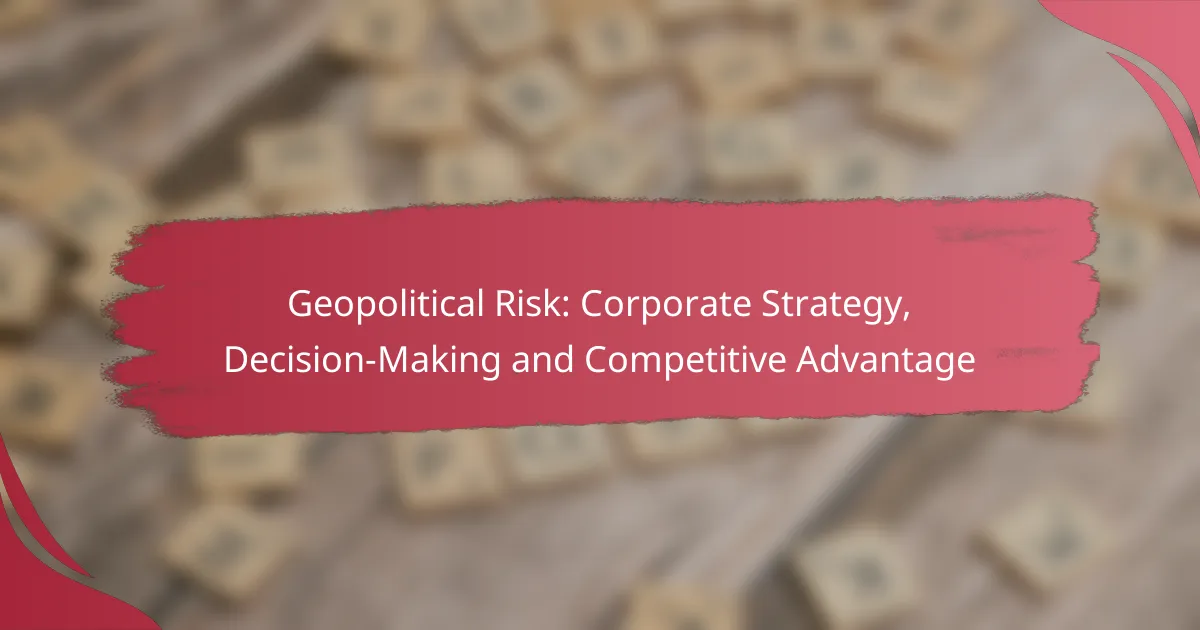Geopolitical risks play a significant role in shaping investment landscapes, with factors such as political instability, economic sanctions, and trade wars influencing market dynamics. To effectively navigate these challenges, investors must assess the potential impacts of political events using a blend of qualitative and quantitative methods. By implementing targeted investment strategies that prioritize diversification and risk mitigation, investors can better safeguard their capital and enhance returns in an uncertain environment.

What Are the Key Geopolitical Risks Affecting Investments?
Key geopolitical risks impacting investments include political instability, economic sanctions, trade wars, regulatory changes, and territorial disputes. Understanding these risks is crucial for investors to navigate potential market volatility and make informed decisions.
Political instability
Political instability refers to the likelihood of government change or civil unrest, which can significantly affect investment climates. Countries experiencing frequent leadership changes or protests may deter foreign investment due to perceived risks.
Investors should monitor political developments and assess the stability of governments in regions of interest. For instance, countries with a history of coups or civil conflicts may present higher risks, prompting investors to seek more stable environments.
Economic sanctions
Economic sanctions are restrictive measures imposed by countries to influence the behavior of a target nation. These can severely impact businesses operating in or with the sanctioned country, leading to reduced market access and increased operational costs.
Investors should evaluate the potential for sanctions when considering investments in certain regions. For example, sanctions against Russia have affected various sectors, prompting investors to reassess their exposure in affected markets.
Trade wars
Trade wars occur when countries impose tariffs or other trade barriers against each other, disrupting global supply chains and increasing costs for businesses. These conflicts can lead to uncertainty in markets, affecting investment decisions.
Investors should stay informed about trade policies and potential tariffs, as these can alter the competitive landscape. For instance, the U.S.-China trade war has led many companies to rethink their supply chains and market strategies.
Regulatory changes
Regulatory changes involve shifts in laws or policies that can impact business operations and investment returns. These changes can arise from new government initiatives or responses to economic conditions, affecting various sectors differently.
Investors need to keep abreast of regulatory developments in their target markets. For example, stricter environmental regulations in the EU may affect energy investments, prompting a reassessment of risk and return profiles.
Territorial disputes
Territorial disputes involve conflicts over land or maritime boundaries, which can lead to military tensions and affect economic stability. Such disputes can disrupt trade routes and create uncertainty for investors operating in affected areas.
Investors should consider the implications of territorial disputes on their investments. For instance, tensions in the South China Sea have raised concerns for shipping and energy exploration, prompting investors to evaluate their exposure to these risks.
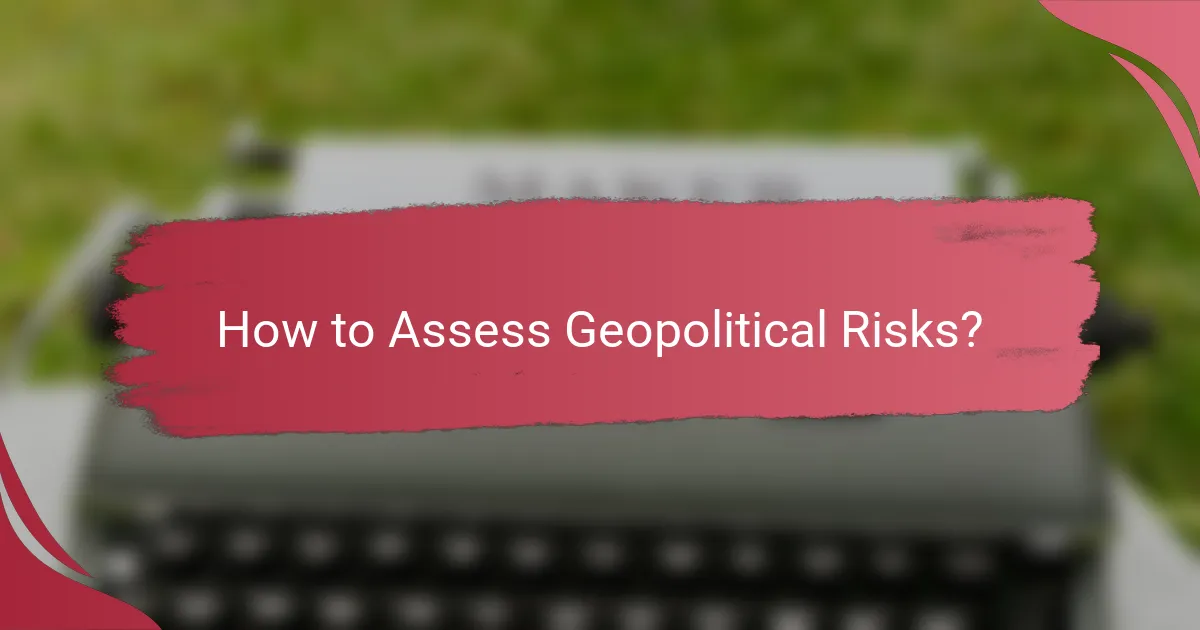
How to Assess Geopolitical Risks?
Assessing geopolitical risks involves evaluating the potential impact of political events on investment and business operations. This process requires a combination of qualitative and quantitative methods to gain a comprehensive understanding of the risks involved.
Qualitative analysis
Qualitative analysis focuses on understanding the context and implications of geopolitical events through expert opinions, historical trends, and political stability assessments. This method often involves evaluating factors such as government policies, social unrest, and international relations.
For instance, analyzing a country’s political climate may include reviewing recent elections, public sentiment, and the actions of key political figures. This approach helps investors gauge the likelihood of significant disruptions that could affect their investments.
Quantitative metrics
Quantitative metrics involve the use of numerical data to assess geopolitical risks. This can include indicators such as economic performance, trade balances, and foreign direct investment levels. By analyzing these metrics, investors can identify patterns and trends that may signal potential risks.
For example, a sudden drop in foreign investment in a country may indicate rising geopolitical tensions. Investors can use statistical models to quantify these risks and make more informed decisions based on historical data and projections.
Scenario planning
Scenario planning is a strategic method that involves creating detailed narratives about potential future events and their impacts on investments. This approach allows businesses to explore various “what-if” scenarios, such as changes in government, economic sanctions, or military conflicts.
By developing multiple scenarios, investors can better prepare for uncertainties and devise contingency plans. This method encourages flexibility and adaptability in investment strategies, enabling firms to respond effectively to unexpected geopolitical developments.
Expert consultations
Consulting with experts in geopolitics, economics, and regional studies provides valuable insights that enhance risk assessments. Engaging with analysts, think tanks, and local advisors can help investors understand complex situations and gain perspectives that quantitative data alone may not reveal.
For example, a regional expert may provide insights into cultural factors influencing political stability, which can be crucial for making informed investment decisions. Regularly updating consultations ensures that investors remain aware of evolving geopolitical landscapes.

What Investment Strategies Mitigate Geopolitical Risks?
Investment strategies that mitigate geopolitical risks focus on reducing exposure to political instability and economic volatility. These strategies often involve diversification, hedging, and careful selection of geographic and sector-specific investments to safeguard capital and optimize returns.
Diversification of assets
Diversification of assets is a fundamental strategy to mitigate geopolitical risks by spreading investments across various asset classes, such as stocks, bonds, and commodities. This approach reduces the impact of adverse events in any single market or sector.
Investors should consider including international assets in their portfolios, as this can further dilute risk associated with specific countries or regions. A balanced mix might involve allocating 20-30% to foreign equities or bonds, depending on risk tolerance.
Hedging strategies
Hedging strategies involve using financial instruments to offset potential losses from geopolitical events. Common methods include options, futures, and currency hedges, which can protect against market downturns or currency fluctuations.
For example, an investor might purchase put options on a major index to safeguard against a market decline. It’s essential to assess the costs of hedging versus the potential benefits, as excessive hedging can erode returns.
Geographic allocation
Geographic allocation refers to strategically distributing investments across different countries or regions to minimize exposure to geopolitical risks. By investing in stable economies alongside emerging markets, investors can balance potential growth with risk management.
A practical approach is to allocate 50-60% of a portfolio to developed markets while the remainder can be invested in emerging markets. This balance allows for participation in growth opportunities while maintaining a safety net against instability.
Sector-specific investments
Sector-specific investments focus on industries that are less sensitive to geopolitical risks, such as utilities, healthcare, and consumer staples. These sectors often provide stability during turbulent times due to consistent demand for their products and services.
Investors should analyze sector performance in relation to geopolitical events, aiming to allocate 20-40% of their portfolio to these defensive sectors. This strategy can help cushion against volatility while still allowing for growth in more cyclical sectors when conditions improve.
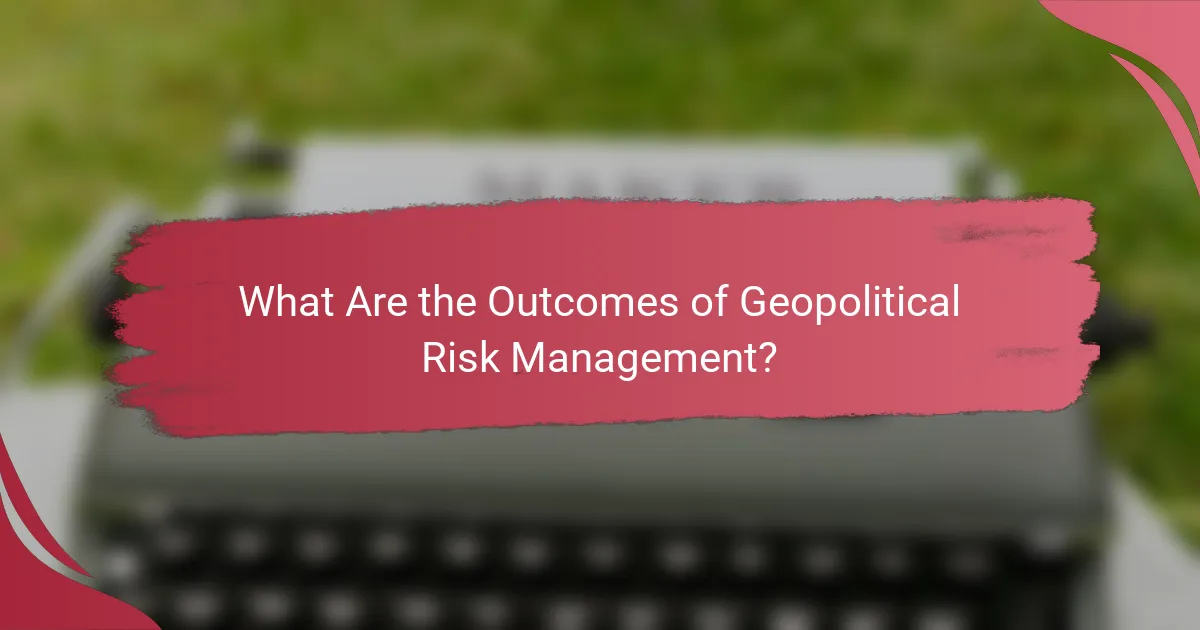
What Are the Outcomes of Geopolitical Risk Management?
Effective geopolitical risk management leads to several key outcomes, including enhanced resilience of investment portfolios, improved decision-making processes, and better risk-adjusted returns. These outcomes help investors navigate uncertainties and capitalize on opportunities in a volatile global landscape.
Increased portfolio resilience
Increased portfolio resilience refers to the ability of an investment portfolio to withstand geopolitical shocks without significant losses. By diversifying investments across various regions and sectors, investors can mitigate risks associated with political instability, trade disputes, or economic sanctions.
For instance, an investor might allocate funds to both emerging markets and stable economies to balance potential downturns. Regularly reviewing and adjusting the portfolio in response to geopolitical developments can further enhance resilience.
Enhanced decision-making
Enhanced decision-making involves utilizing geopolitical risk assessments to inform investment choices. By understanding the implications of political events, investors can make more informed decisions about asset allocation and timing.
Investors should consider establishing a framework for evaluating geopolitical risks, such as monitoring news sources, engaging with geopolitical analysts, and utilizing scenario planning. This proactive approach can lead to timely adjustments that capitalize on market fluctuations.
Improved risk-adjusted returns
Improved risk-adjusted returns indicate that investors can achieve higher returns relative to the risks taken by effectively managing geopolitical risks. By identifying and acting on geopolitical trends, investors can position themselves to benefit from market inefficiencies.
For example, investing in sectors that are likely to thrive during geopolitical tensions, such as defense or energy, can enhance returns. However, it is crucial to balance these opportunities with a thorough understanding of potential downsides to avoid overexposure to high-risk assets.
